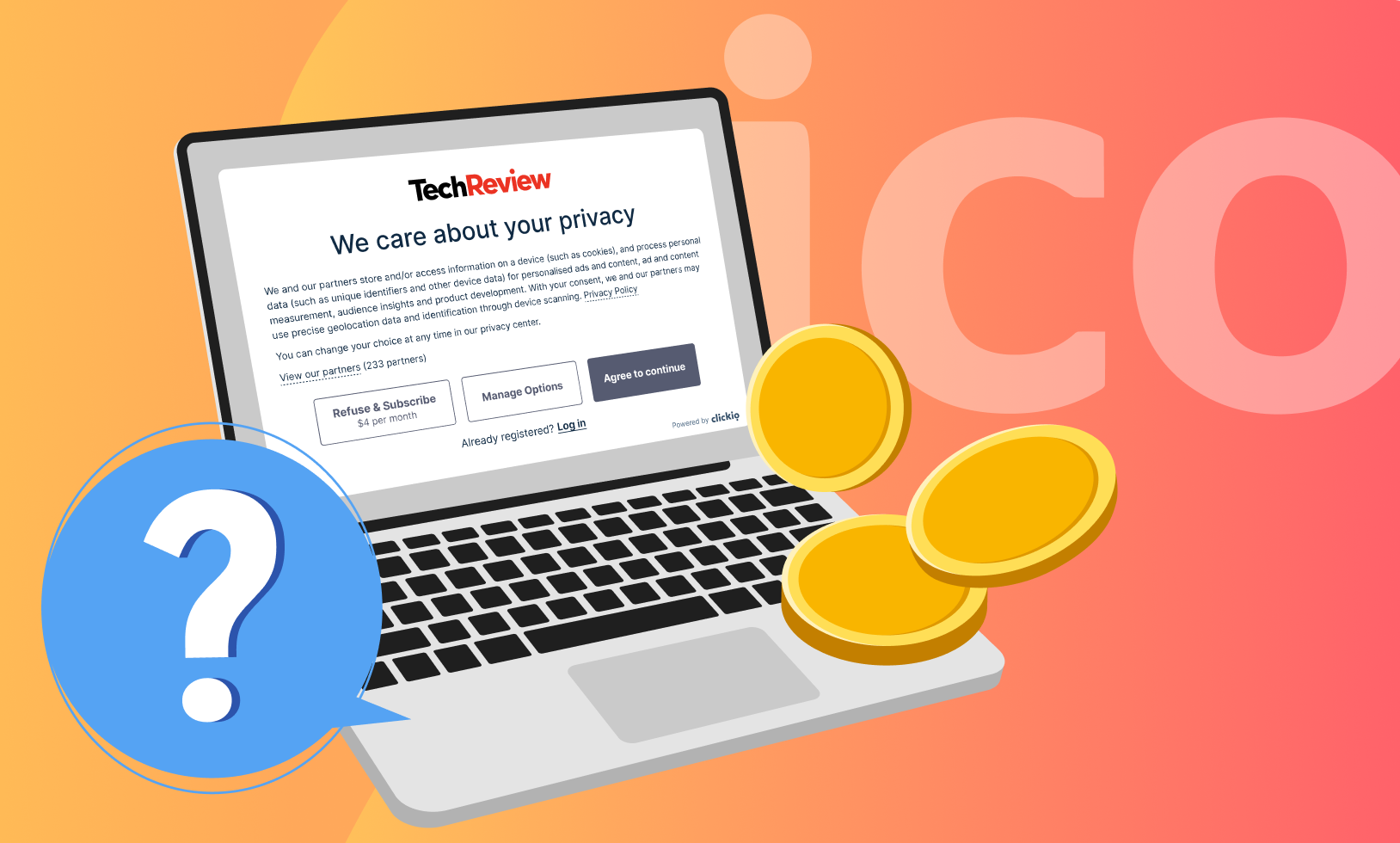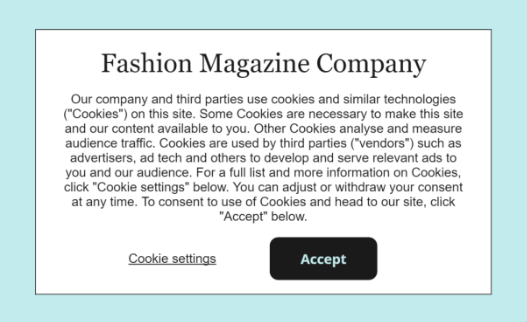Are Cookie Paywalls legal in the UK?

As digital privacy concerns grow, publishers are exploring new ways to balance user privacy with revenue needs. One approach gaining attention is the “Cookie Paywall” or “Consent or Pay” model. It has been implemented by many publishers across Europe, including giants like Meta.
Are Cookie Paywalls legal in the UK? This blog post delves into the UK Information Commissioner’s Office (ICO) latest guidance on these models and their implications for publishers.
Summary
- Recent Developments from the Information Commissioner’s Office (ICO)
- The Impact on Publishers
- Clickio launches Built-in Paywall
- ICO’s view on “Consent or Pay”
- Conclusion
Recent Developments from the Information Commissioner’s Office (ICO)
In August 2023, the ICO, together with the Competition and Markets Authority (CMA), highlighted concerns about the design of Cookie Banners in the joint paper “Harmful Design in Digital Markets”. They pointed out that while accepting cookies is often made easy through a prominent “Agree to all” button, rejecting them requires navigating through more complex settings. This design can nudge users towards giving consent by default, rather than making an informed choice.

“Instead, if users do not wish to consent to non-essential cookies, they must go into a settings page to do so and, in some cases, refuse consent to individual cookies. This process is much more time consuming and onerous; instead, users may simply click “Accept all” to make the pop-up go away.”
Following up in November 2023, the ICO directly addressed this issue with major UK websites, emphasizing the need for a “Reject all” option to be as visible and accessible as the “Accept all” button. The message was clear: make it easier for users to refuse non-essential cookies, or face potential regulatory action.
The Impact on Publishers
These developments have significant implications for publishers. As PressGazette reports, the Mail Online estimated that adding a “Reject all” button would increase reject rates from 7% to 50%, and reduce advertising revenue by 41%. This situation has led UK publishers to consider Cookie Paywalls more seriously as a viable alternative. These paywalls offer users a clear choice: accept cookies for a personalized ad experience or pay a small fee for an ad-free visit. This model has become popular in several European countries, especially in Germany, where over 60% of major newsbrands have implemented the “consent or pay” model.
Clickio launches Built-in Paywall
In response to the growing interest in Consent or Pay models across Europe, Clickio introduced a Built-in Paywall feature in January 2024, becoming the first Consent Management Platform to seamlessly integrate a fully-managed Cookie Paywall. Publishers using Clickio Consent can enable “Consent or Pay” in minutes, without any help from their technical departments.
Enabling Built-in Paywall gives users a clear choice between consenting to personalised advertising and paying a monthly fee defined by the website owner in order to access content without tracking.
As a result of enabling Built-in Paywall, publishers on average experience 28% increase in consent rates, 25% increase in advertising revenue and start receiving additional recurring revenue from paid subscribers.
ICO’s view on “Consent or Pay”
In March 2024, the ICO shared its preliminary view on Cookie Paywalls, stating that data protection laws do not inherently prohibit “Consent or Pay” models. However, companies integrating “consent or pay” need to be aware of a number of factors that can influence whether the specific implementation is compliant. Below, we list the factors raised by the ICO and evaluate how Clickio’s Built-in Paywall feature aligns with them.
| Factor | ICO’s Commentary | Clickio’s Built-in Paywall |
| Power balance | “To what extent is there a clear imbalance of power between the service provider and its users? Consent for personalised ads is unlikely to be freely given when people have little or no choice about whether to use a service or not, which could be the case when they are accessing a public service or the service provider has a position of market power.” | Our Built-in Paywall targets independent publishers, who typically operate within a competitive landscape offering ample alternatives. This ensures users have the freedom to choose, maintaining a healthy power balance between publishers and users. |
| Equivalence | “Are the ad-funded service and the paid-for service basically the same? For example, if a service provider offers a choice between personalised ads and a ‘premium’ ad-free service that bundles lots of other additional extras together, then this wouldn’t be the case.” | Unlike Premium access Paywalls, Clickio Built-in Paywall ensures that subscribers are paying for ad-free access to the same content available to those who consent to personalized advertising, upholding the principle of equivalence. |
| Appropriate fee | “Is the fee appropriate? Consent for personalised ads is unlikely to be freely given when the alternative is an unreasonably high fee. Fees should be set so as to provide people with a realistic choice between the options, with the provider capable of providing objective justification of the appropriateness of the level.” | Our publishers set their own monthly subscription fees, and most go for reasonable rates of $1-5/month, depending on their advertising revenue per user and the nature of their content. |
| Privacy by design | “Are the choices presented fairly and equally? This means giving people clear, understandable information about what the options mean for them and what each one involves (see below). Consent for personalised ads is unlikely to be freely given when people don’t understand how their personal information is being used or that they can access the service without having to agree to the use of their personal information.” | The paywall solution is integrated right into the Cookie Banner, offering a clear description of each option directly within the Cookie Banner, Clickio ensures users are well-informed about how their data will be used, whether they choose personalized ads or opt for a subscription, in line with the IAB’s Transparency and Consent Framework v2.2. |
The ICO promises to provide more detailed guidance later in 2024, based on the results of the consultation, which will run until April 17, 2024. We will continue to monitor the situation and update this post as it becomes available.
Conclusion
The ICO’s emphasis on a “Reject all” option signals a shift, pushing publishers to find innovative ways to balance user privacy and revenue generation. Cookie paywalls are shaping up as a promising direction for many in the industry. Although definitive guidelines from the ICO are still on the horizon, their preliminary feedback offers valuable insights for publishers mapping out strategies for 2024 and beyond.
Update August 2024: In the summer of 2024, several leading UK brands, including The Times, The Sun, Mirror, and The Independent, that received warning letters from the ICO proceeded with the implementation of the Consent or Pay model, opting not to wait for the final guidance from the ICO. For a detailed overview of the different approaches these publishers adopted, see our blog post: “Reject and Pay”: UK News Publishers’ New GDPR Strategy.
